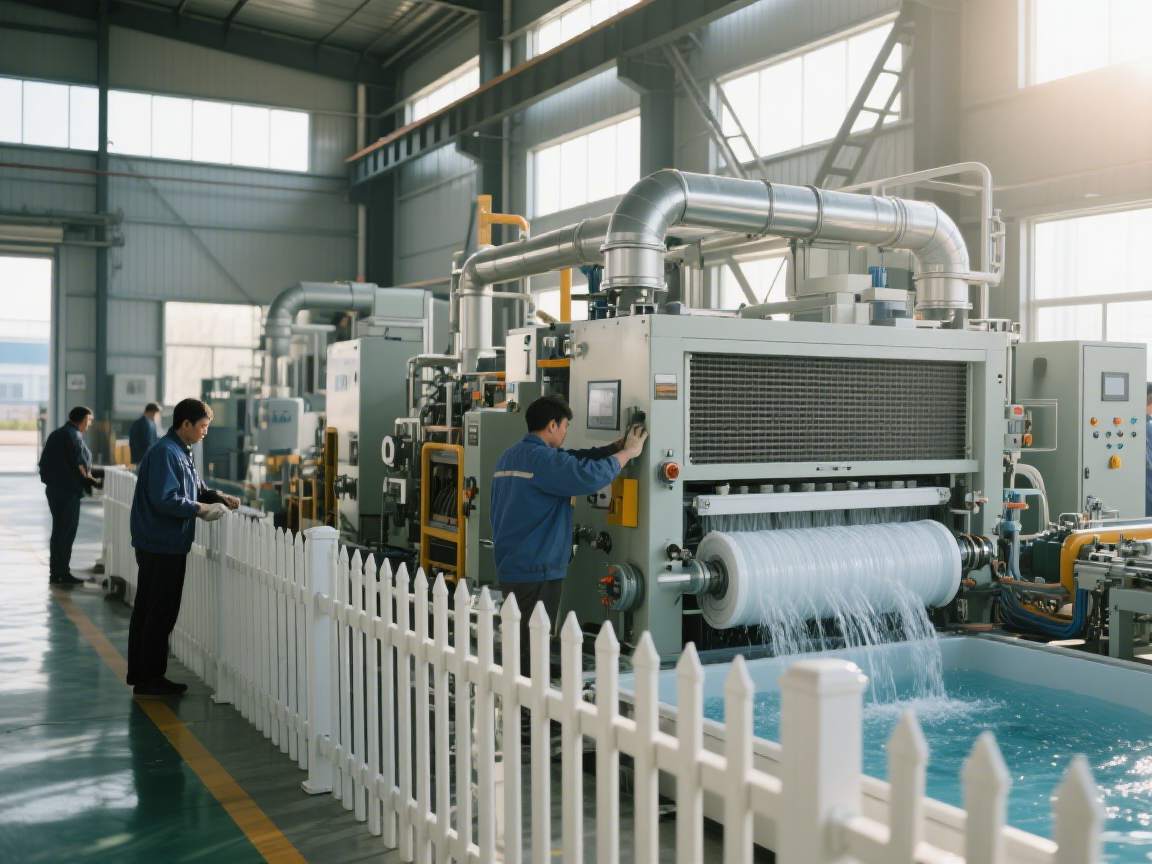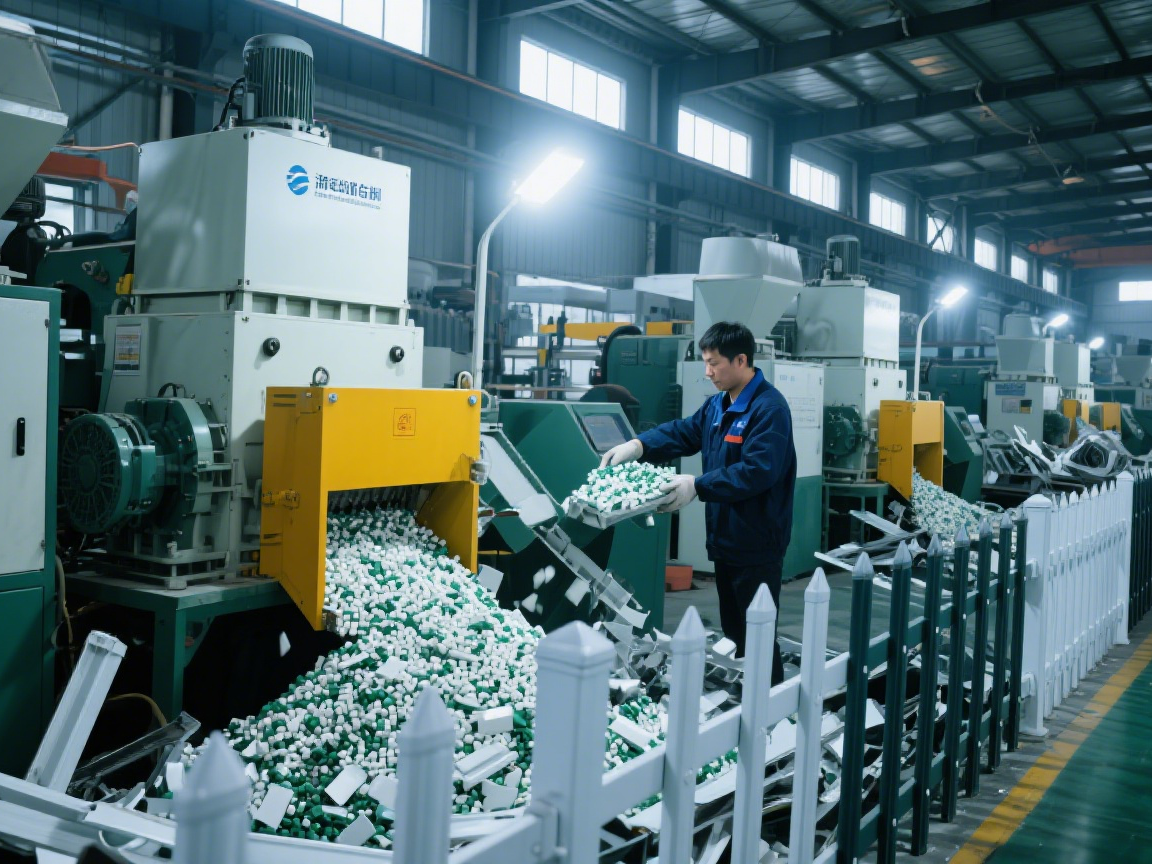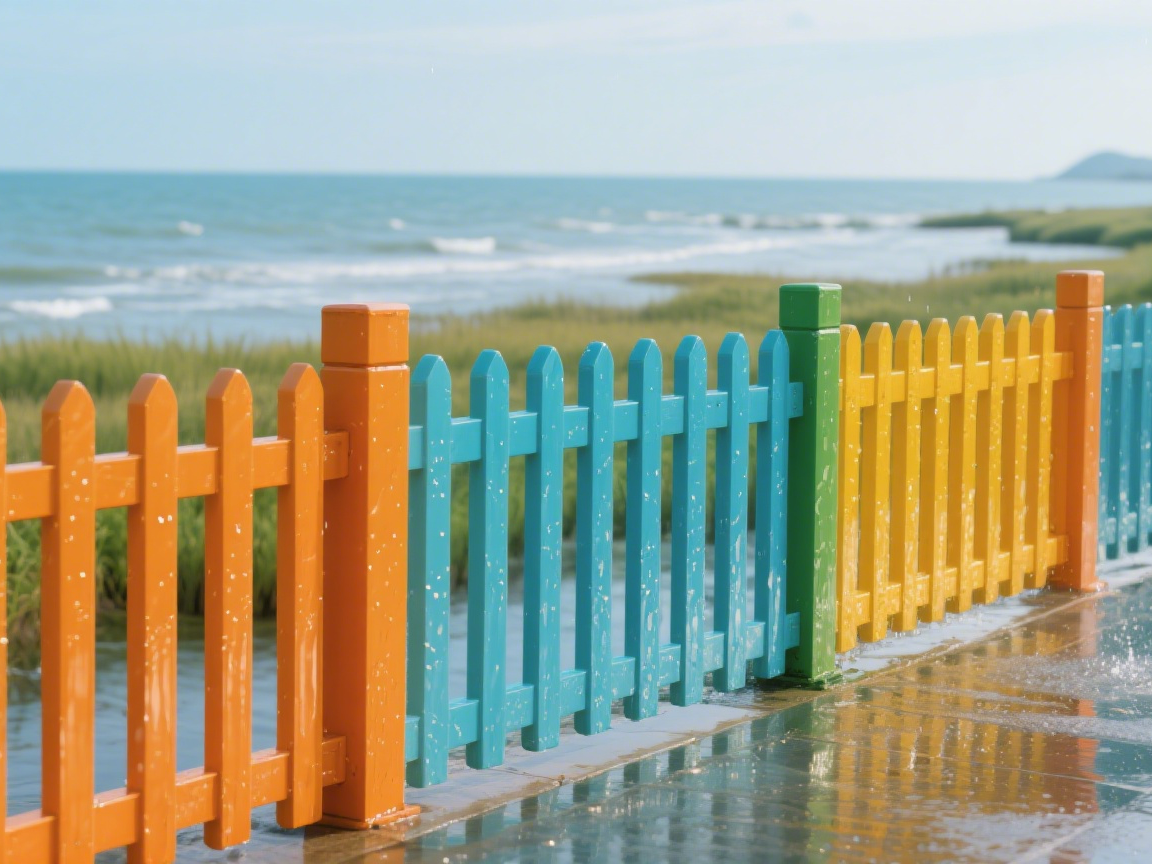Amid the global wave of green transformation driven by the “Double Carbon” goals, the environmental performance of building materials has become a key indicator for measuring the sustainable development of the industry. PVC fencing, with its green solutions throughout the entire lifecycle, has overturned the environmental limitations of traditional fencing and is reshaping the ecological standards of modern protection.
1. Source Innovation: Clean Production Driving Low-Carbon Transformation
The environmental-friendly features of PVC fencing originate from the revolutionary innovation in raw material production. During the manufacturing of polyvinyl chloride, advanced enterprises have reduced unit energy consumption by over 40% through the introduction of circulating water cooling systems and waste heat recovery devices. At an intelligent PVC production base in Tianjin, the self-developed closed-loop production process not only achieves 95% recycling of water resources but also controls volatile organic compound emissions to one-fifth of the national standard through low-temperature polymerization technology. In contrast to traditional wooden fencing, which consumes vast forest resources, the production of each ton of PVC fencing can save 3.2 cubic meters of log cutting, equivalent to protecting 15 square meters of forest ecosystem.

2. Application Scenarios: Maintenance-Free Design Reducing Environmental Burden
In practical application scenarios, PVC fencing demonstrates unique environmental advantages with its maintenance-free characteristics. In a wetland park in southern coastal China, PVC fencing has maintained its structural integrity and vibrant color after five years of exposure to sea winds. Its nano-level anti-fouling coating allows for self-cleaning with just rainwater, reducing the annual use of 12 kilograms of anti-rust paint compared to iron fencing, thereby preventing soil and groundwater contamination from organic solvents. In the frigid regions of northern China, the weather resistance of PVC fencing eliminates the need for special winter maintenance, reducing the use of chemical anti-freezing coatings compared to wooden fencing and further minimizing environmental risks.
3. Circular Regeneration: Closed-Loop Utilization Breaking Resource Bottlenecks
The circular economy model of PVC fencing establishes a complete closed-loop for sustainable development. Professional recycling agencies can transform discarded fencing into high-purity recycled pellets through low-temperature crushing technology. These recycled materials not only meet the production requirements of secondary products such as pipes and panels but can also be applied to high-end PVC products through modification technology. Data from a recycled material enterprise in Zhejiang shows that each ton of recycled PVC fencing can reduce crude oil consumption by 600 kilograms, with a carbon emission intensity only one-third that of virgin materials. This circular model completely breaks the linear consumption pattern of traditional building materials—”extraction – use – disposal”—and extends the service life of fencing from 20 years to an infinite cycle.

4. Systemic Effects: Full-Scenario Empowerment of Green Infrastructure
The environmental value of PVC fencing is also reflected in its systematic contribution to green infrastructure. In municipal projects, the modular installation design triples construction efficiency, reducing noise and carbon emissions from machinery operations. In ecological restoration projects, its flexible shapes can mimic natural landscapes, avoiding overuse of non-renewable materials like stone. In a sponge city pilot project, the adoption of PVC ecological fencing not only enables rainwater infiltration but also reduces the paint spraying process in landscape engineering due to its adjustable color features, decreasing volatile organic compound emissions.
From clean manufacturing at the production end, to low-carbon operation and maintenance during use, to circular regeneration at the recycling end, PVC fencing redefines the ecological standards of protective materials through full-lifecycle environmental innovation. With continuous technological breakthroughs, PVC fencing is evolving from a single eco-friendly building material into a core force driving the development of green buildings and the circular economy, offering a practical solution for building a harmonious coexistence between humanity and nature.

